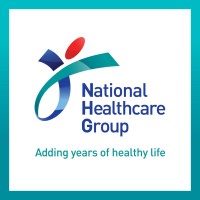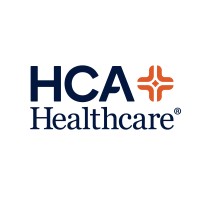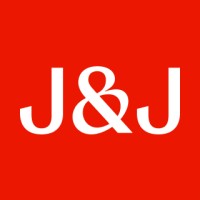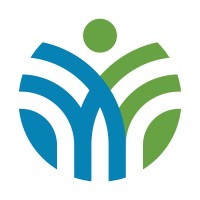
National Healthcare Group Company Cyber Security Posture
nhg.com.sgThe National Healthcare Group (NHG) is a leader in public healthcare in Singapore, recognised at home and abroad for the quality of its medical expertise and facilities. Care is provided through an integrated network of seven primary care polyclinics, acute care and tertiary hospitals, national specialty centres and business divisions. Together they bring a rich legacy of medical expertise to our philosophy of integrated patient-centred care. NHG’s vision is “Adding Years of Healthy Life”. This vision goes beyond merely healing the sick to the more difficult and infinitely more rewarding task of preventing illness and preserving health and quality of life. With some 22,000 staff, NHG aims to provide care that is patient-centric, accessible, seamless, comprehensive, appropriate and cost-effective. As the Regional Health System (RHS) for Central-North Singapore, it is vital for NHG to partner and collaborate with stakeholders, community advisors, and voluntary welfare organisations. Together with our patients, their families and caregivers, we aim to deliver integrated healthcare services and programmes that help in Adding Years of Healthy Life to all concerned.
NHG Company Details
national-healthcare-group
1404 employees
21699
62
Hospitals and Health Care
nhg.com.sg
Scan still pending
NAT_2454210
In-progress
Between 800 and 900
This score is AI-generated and less favored by cyber insurers, who prefer the TPRM score.
 NHG Global Score
NHG Global Score.png)

National Healthcare Group Company Scoring based on AI Models
| Model Name | Date | Description | Current Score Difference | Score |
|---|---|---|---|---|
| AVERAGE-Industry | 03-12-2025 | This score represents the average cybersecurity rating of companies already scanned within the same industry. It provides a benchmark to compare an individual company's security posture against its industry peers. | N/A | Between 800 and 900 |
National Healthcare Group Company Cyber Security News & History
| Entity | Type | Severity | Impact | Seen | Url ID | Details | View |
|---|---|---|---|---|---|---|---|
| National Healthcare Group | Data Leak | 50 | 2 | 01/2020 | NAT231261222 | Link | |
Rankiteo Explanation : Attack limited on finance or reputationDescription: National Healthcare Group (NHG) has been fined $6,000 for failing to secure personal data. A list containing the information of 129 doctors was found by one of them when she did a Google search of her name. This list contained the full names, mobile numbers, NRIC numbers and photographs of some of them. This list should not have been accessible to non-authorised users and members of the public. | |||||||
National Healthcare Group Company Subsidiaries

The National Healthcare Group (NHG) is a leader in public healthcare in Singapore, recognised at home and abroad for the quality of its medical expertise and facilities. Care is provided through an integrated network of seven primary care polyclinics, acute care and tertiary hospitals, national specialty centres and business divisions. Together they bring a rich legacy of medical expertise to our philosophy of integrated patient-centred care. NHG’s vision is “Adding Years of Healthy Life”. This vision goes beyond merely healing the sick to the more difficult and infinitely more rewarding task of preventing illness and preserving health and quality of life. With some 22,000 staff, NHG aims to provide care that is patient-centric, accessible, seamless, comprehensive, appropriate and cost-effective. As the Regional Health System (RHS) for Central-North Singapore, it is vital for NHG to partner and collaborate with stakeholders, community advisors, and voluntary welfare organisations. Together with our patients, their families and caregivers, we aim to deliver integrated healthcare services and programmes that help in Adding Years of Healthy Life to all concerned.
Access Data Using Our API

Get company history
.png)
NHG Cyber Security News
UnitedHealth Adopts Aggressive Approach to Recover Ransomware Attack Loans
UnitedHealth Group has adopted an aggressive approach to recover outstanding balances on loans issued to healthcare providers affected by ...
A Look at 2024’s Health Care Cybersecurity Challenges | AHA News
The ransomware attack on United HealthGroup's subsidiary Change Healthcare impacted every hospital in the country in one way or another and was ...
National security leaders: Combating cyber threats from China takes collaboration
US defense agencies must partner with healthcare and other industries to neutralize threats from Volt Typhoon, Salt Typhoon and others.
Pharmacy group, providers sue Change Healthcare after cyberattack
The cyberattack on Change in late February caused upheaval across the nation's healthcare system, delaying payments to providers, prescription ...
Change Healthcare Data Breach: What to Know for Your Social Security Number and More
In February, hackers breached Change Healthcare. TechCrunch reported at the time it was linked to a Russian-based ransomware group, where ...
Meet the Women in GovTech 2024
The wide scope of the report points to the complex and diverse ways women contribute to the mission of digital government. Some of the many ...
What We Learned: Change Healthcare Cyber Attack
The cyberattack that occurred in February knocked Change Healthcare—a subsidiary of the behemoth global health company UnitedHealth—offline, ...
Hospitals across US disrupted after cyberattack targets healthcare titan Ascencion
Hospitals across the nation were disrupted Thursday after mega-health system Ascencion confirmed it was hit by a cyberattack amid heightened ...
South Africa Lab Still Reeling From Ransomware Attack
The cyberattack disrupted national laboratory services, which could slow response to disease outbreaks such as mpox, experts warn.

NHG Similar Companies

Mayo Clinic
Mayo Clinic has expanded and changed in many ways, but our values remain true to the vision of our founders. Our primary value – The needs of the patient come first – guides our plans and decisions as we create the future of health care. Join us and you'll find a culture of teamwork, professionalism

Mass General Brigham
Mass General Brigham is an integrated academic health care system, uniting great minds to solve the hardest problems in medicine for our communities and the world. Mass General Brigham connects a full continuum of care across a system of academic medical centers, community and specialty hospitals, a

HCA Healthcare
HCA Healthcare is dedicated to giving people a healthier tomorrow. As one of the nation’s leading providers of healthcare services, HCA Healthcare is comprised of 188 hospitals and 2,400+ sites of care in 20 states and the United Kingdom. In addition to hospitals, sites of care include surgery cen

Johnson & Johnson MedTech
At Johnson & Johnson MedTech, we are working to solve the world’s most pressing healthcare challenges through innovations at the intersection of biology and technology. With deep expertise in surgery, orthopaedics, cardiovascular, and vision, we design healthcare solutions that are smarter, less inv

Allina Health
People at Allina Health have a career of making a difference in the lives of the millions of patients we see each year at our 90+ clinics, 12 hospitals and through a wide variety of specialty care services in Minnesota and western Wisconsin. We’re a not-for-profit organization committed to enrich

Health Care Service Corporation
Health Care Service Corporation serves nearly 23 million people across the United States through its portfolio of health benefit solutions. HCSC provides health coverage options for employers large and small, individuals and families, and Medicare and Medicaid plans. HCSC also offers related health

Frequently Asked Questions (FAQ) on Cybersecurity Incidents
NHG CyberSecurity History Information
Total Incidents: According to Rankiteo, NHG has faced 1 incidents in the past.
Incident Types: The types of cybersecurity incidents that have occurred include ['Data Leak'].
Total Financial Loss: The total financial loss from these incidents is estimated to be {total_financial_loss}.
Cybersecurity Posture: The company's overall cybersecurity posture is described as The National Healthcare Group (NHG) is a leader in public healthcare in Singapore, recognised at home and abroad for the quality of its medical expertise and facilities. Care is provided through an integrated network of seven primary care polyclinics, acute care and tertiary hospitals, national specialty centres and business divisions. Together they bring a rich legacy of medical expertise to our philosophy of integrated patient-centred care. NHG’s vision is “Adding Years of Healthy Life”. This vision goes beyond merely healing the sick to the more difficult and infinitely more rewarding task of preventing illness and preserving health and quality of life. With some 22,000 staff, NHG aims to provide care that is patient-centric, accessible, seamless, comprehensive, appropriate and cost-effective. As the Regional Health System (RHS) for Central-North Singapore, it is vital for NHG to partner and collaborate with stakeholders, community advisors, and voluntary welfare organisations. Together with our patients, their families and caregivers, we aim to deliver integrated healthcare services and programmes that help in Adding Years of Healthy Life to all concerned..
Detection and Response: The company detects and responds to cybersecurity incidents through {description_of_detection_and_response_process}.
Incident Details
Incident 1: Ransomware Attack
Title: {Incident_Title}
Description: {Brief_description_of_the_incident}
Date Detected: {Detection_Date}
Date Publicly Disclosed: {Disclosure_Date}
Date Resolved: {Resolution_Date}
Type: {Type_of_Attack}
Attack Vector: {Attack_Vector}
Vulnerability Exploited: {Vulnerability}
Threat Actor: {Threat_Actor}
Motivation: {Motivation}
Incident 2: Data Breach
Title: {Incident_Title}
Description: {Brief_description_of_the_incident}
Date Detected: {Detection_Date}
Date Publicly Disclosed: {Disclosure_Date}
Date Resolved: {Resolution_Date}
Type: {Type_of_Attack}
Attack Vector: {Attack_Vector}
Vulnerability Exploited: {Vulnerability}
Threat Actor: {Threat_Actor}
Motivation: {Motivation}
Common Attack Types: As of now, the company has not encountered any reported incidents involving common cyberattacks.
Identification of Attack Vectors: The company identifies the attack vectors used in incidents through {description_of_identification_process}.
Impact of the Incidents
Incident 1: Ransomware Attack
Financial Loss: {Financial_Loss}
Data Compromised: {Data_Compromised}
Systems Affected: {Systems_Affected}
Downtime: {Downtime}
Operational Impact: {Operational_Impact}
Conversion Rate Impact: {Conversion_Rate_Impact}
Revenue Loss: {Revenue_Loss}
Customer Complaints: {Customer_Complaints}
Brand Reputation Impact: {Brand_Reputation_Impact}
Legal Liabilities: {Legal_Liabilities}
Identity Theft Risk: {Identity_Theft_Risk}
Payment Information Risk: {Payment_Information_Risk}
Incident 2: Data Breach
Financial Loss: {Financial_Loss}
Data Compromised: {Data_Compromised}
Systems Affected: {Systems_Affected}
Downtime: {Downtime}
Operational Impact: {Operational_Impact}
Conversion Rate Impact: {Conversion_Rate_Impact}
Revenue Loss: {Revenue_Loss}
Customer Complaints: {Customer_Complaints}
Brand Reputation Impact: {Brand_Reputation_Impact}
Legal Liabilities: {Legal_Liabilities}
Identity Theft Risk: {Identity_Theft_Risk}
Payment Information Risk: {Payment_Information_Risk}
Average Financial Loss: The average financial loss per incident is {average_financial_loss}.
Commonly Compromised Data Types: The types of data most commonly compromised in incidents are {list_of_commonly_compromised_data_types}.
Incident 1: Ransomware Attack
Entity Name: {Entity_Name}
Entity Type: {Entity_Type}
Industry: {Industry}
Location: {Location}
Size: {Size}
Customers Affected: {Customers_Affected}
Incident 2: Data Breach
Entity Name: {Entity_Name}
Entity Type: {Entity_Type}
Industry: {Industry}
Location: {Location}
Size: {Size}
Customers Affected: {Customers_Affected}
Response to the Incidents
Incident 1: Ransomware Attack
Incident Response Plan Activated: {Yes/No}
Third Party Assistance: {Yes/No}
Law Enforcement Notified: {Yes/No}
Containment Measures: {Containment_Measures}
Remediation Measures: {Remediation_Measures}
Recovery Measures: {Recovery_Measures}
Communication Strategy: {Communication_Strategy}
Adaptive Behavioral WAF: {Adaptive_Behavioral_WAF}
On-Demand Scrubbing Services: {On_Demand_Scrubbing_Services}
Network Segmentation: {Network_Segmentation}
Enhanced Monitoring: {Enhanced_Monitoring}
Incident 2: Data Breach
Incident Response Plan Activated: {Yes/No}
Third Party Assistance: {Yes/No}
Law Enforcement Notified: {Yes/No}
Containment Measures: {Containment_Measures}
Remediation Measures: {Remediation_Measures}
Recovery Measures: {Recovery_Measures}
Communication Strategy: {Communication_Strategy}
Adaptive Behavioral WAF: {Adaptive_Behavioral_WAF}
On-Demand Scrubbing Services: {On_Demand_Scrubbing_Services}
Network Segmentation: {Network_Segmentation}
Enhanced Monitoring: {Enhanced_Monitoring}
Incident Response Plan: The company's incident response plan is described as {description_of_incident_response_plan}.
Third-Party Assistance: The company involves third-party assistance in incident response through {description_of_third_party_involvement}.
Data Breach Information
Incident 2: Data Breach
Type of Data Compromised: {Type_of_Data}
Number of Records Exposed: {Number_of_Records}
Sensitivity of Data: {Sensitivity_of_Data}
Data Exfiltration: {Yes/No}
Data Encryption: {Yes/No}
File Types Exposed: {File_Types}
Personally Identifiable Information: {Yes/No}
Prevention of Data Exfiltration: The company takes the following measures to prevent data exfiltration: {description_of_prevention_measures}.
Handling of PII Incidents: The company handles incidents involving personally identifiable information (PII) through {description_of_handling_process}.
Ransomware Information
Incident 1: Ransomware Attack
Ransom Demanded: {Ransom_Amount}
Ransom Paid: {Ransom_Paid}
Ransomware Strain: {Ransomware_Strain}
Data Encryption: {Yes/No}
Data Exfiltration: {Yes/No}
Ransom Payment Policy: The company's policy on paying ransoms in ransomware incidents is described as {description_of_ransom_payment_policy}.
Data Recovery from Ransomware: The company recovers data encrypted by ransomware through {description_of_data_recovery_process}.
Regulatory Compliance
Incident 1: Ransomware Attack
Regulations Violated: {Regulations_Violated}
Fines Imposed: {Fines_Imposed}
Legal Actions: {Legal_Actions}
Regulatory Notifications: {Regulatory_Notifications}
Incident 2: Data Breach
Regulations Violated: {Regulations_Violated}
Fines Imposed: {Fines_Imposed}
Legal Actions: {Legal_Actions}
Regulatory Notifications: {Regulatory_Notifications}
Regulatory Frameworks: The company complies with the following regulatory frameworks regarding cybersecurity: {list_of_regulatory_frameworks}.
Ensuring Regulatory Compliance: The company ensures compliance with regulatory requirements through {description_of_compliance_measures}.
Lessons Learned and Recommendations
Incident 1: Ransomware Attack
Lessons Learned: {Lessons_Learned}
Incident 2: Data Breach
Lessons Learned: {Lessons_Learned}
Incident 1: Ransomware Attack
Recommendations: {Recommendations}
Incident 2: Data Breach
Recommendations: {Recommendations}
Key Lessons Learned: The key lessons learned from past incidents are {list_of_key_lessons_learned}.
Implemented Recommendations: The company has implemented the following recommendations to improve cybersecurity: {list_of_implemented_recommendations}.
References
Additional Resources: Stakeholders can find additional resources on cybersecurity best practices at {list_of_additional_resources}.
Investigation Status
Incident 1: Ransomware Attack
Investigation Status: {Investigation_Status}
Incident 2: Data Breach
Investigation Status: {Investigation_Status}
Communication of Investigation Status: The company communicates the status of incident investigations to stakeholders through {description_of_communication_process}.
Stakeholder and Customer Advisories
Incident 1: Ransomware Attack
Stakeholder Advisories: {Stakeholder_Advisories}
Customer Advisories: {Customer_Advisories}
Incident 2: Data Breach
Stakeholder Advisories: {Stakeholder_Advisories}
Customer Advisories: {Customer_Advisories}
Advisories Provided: The company provides the following advisories to stakeholders and customers following an incident: {description_of_advisories_provided}.
Initial Access Broker
Incident 1: Ransomware Attack
Entry Point: {Entry_Point}
Reconnaissance Period: {Reconnaissance_Period}
Backdoors Established: {Backdoors_Established}
High Value Targets: {High_Value_Targets}
Data Sold on Dark Web: {Yes/No}
Incident 2: Data Breach
Entry Point: {Entry_Point}
Reconnaissance Period: {Reconnaissance_Period}
Backdoors Established: {Backdoors_Established}
High Value Targets: {High_Value_Targets}
Data Sold on Dark Web: {Yes/No}
Monitoring and Mitigation of Initial Access Brokers: The company monitors and mitigates the activities of initial access brokers through {description_of_monitoring_and_mitigation_measures}.
Post-Incident Analysis
Incident 1: Ransomware Attack
Root Causes: {Root_Causes}
Corrective Actions: {Corrective_Actions}
Incident 2: Data Breach
Root Causes: {Root_Causes}
Corrective Actions: {Corrective_Actions}
Post-Incident Analysis Process: The company's process for conducting post-incident analysis is described as {description_of_post_incident_analysis_process}.
Corrective Actions Taken: The company has taken the following corrective actions based on post-incident analysis: {list_of_corrective_actions_taken}.
Additional Questions
General Information
Ransom Payment History: The company has {paid/not_paid} ransoms in the past.
Last Ransom Demanded: The amount of the last ransom demanded was {last_ransom_amount}.
Last Attacking Group: The attacking group in the last incident was {last_attacking_group}.
Incident Details
Most Recent Incident Detected: The most recent incident detected was on {most_recent_incident_detected_date}.
Most Recent Incident Publicly Disclosed: The most recent incident publicly disclosed was on {most_recent_incident_publicly_disclosed_date}.
Most Recent Incident Resolved: The most recent incident resolved was on {most_recent_incident_resolved_date}.
Impact of the Incidents
Highest Financial Loss: The highest financial loss from an incident was {highest_financial_loss}.
Most Significant Data Compromised: The most significant data compromised in an incident was {most_significant_data_compromised}.
Most Significant System Affected: The most significant system affected in an incident was {most_significant_system_affected}.
Response to the Incidents
Third-Party Assistance in Most Recent Incident: The third-party assistance involved in the most recent incident was {third_party_assistance_in_most_recent_incident}.
Containment Measures in Most Recent Incident: The containment measures taken in the most recent incident were {containment_measures_in_most_recent_incident}.
Data Breach Information
Most Sensitive Data Compromised: The most sensitive data compromised in a breach was {most_sensitive_data_compromised}.
Number of Records Exposed: The number of records exposed in the most significant breach was {number_of_records_exposed}.
Ransomware Information
Highest Ransom Demanded: The highest ransom demanded in a ransomware incident was {highest_ransom_demanded}.
Highest Ransom Paid: The highest ransom paid in a ransomware incident was {highest_ransom_paid}.
Regulatory Compliance
Highest Fine Imposed: The highest fine imposed for a regulatory violation was {highest_fine_imposed}.
Most Significant Legal Action: The most significant legal action taken for a regulatory violation was {most_significant_legal_action}.
Lessons Learned and Recommendations
Most Significant Lesson Learned: The most significant lesson learned from past incidents was {most_significant_lesson_learned}.
Most Significant Recommendation Implemented: The most significant recommendation implemented to improve cybersecurity was {most_significant_recommendation_implemented}.
References
Most Recent Source: The most recent source of information about an incident is {most_recent_source}.
Most Recent URL for Additional Resources: The most recent URL for additional resources on cybersecurity best practices is {most_recent_url}.
Investigation Status
Current Status of Most Recent Investigation: The current status of the most recent investigation is {current_status_of_most_recent_investigation}.
Stakeholder and Customer Advisories
Most Recent Stakeholder Advisory: The most recent stakeholder advisory issued was {most_recent_stakeholder_advisory}.
Most Recent Customer Advisory: The most recent customer advisory issued was {most_recent_customer_advisory}.
Initial Access Broker
Most Recent Entry Point: The most recent entry point used by an initial access broker was {most_recent_entry_point}.
Most Recent Reconnaissance Period: The most recent reconnaissance period for an incident was {most_recent_reconnaissance_period}.
Post-Incident Analysis
Most Significant Root Cause: The most significant root cause identified in post-incident analysis was {most_significant_root_cause}.
Most Significant Corrective Action: The most significant corrective action taken based on post-incident analysis was {most_significant_corrective_action}.
What Do We Measure?
















Every week, Rankiteo analyzes billions of signals to give organizations a sharper, faster view of emerging risks. With deeper, more actionable intelligence at their fingertips, security teams can outpace threat actors, respond instantly to Zero-Day attacks, and dramatically shrink their risk exposure window.
These are some of the factors we use to calculate the overall score:
Identify exposed access points, detect misconfigured SSL certificates, and uncover vulnerabilities across the network infrastructure.
Gain visibility into the software components used within an organization to detect vulnerabilities, manage risk, and ensure supply chain security.
Monitor and manage all IT assets and their configurations to ensure accurate, real-time visibility across the company's technology environment.
Leverage real-time insights on active threats, malware campaigns, and emerging vulnerabilities to proactively defend against evolving cyberattacks.




